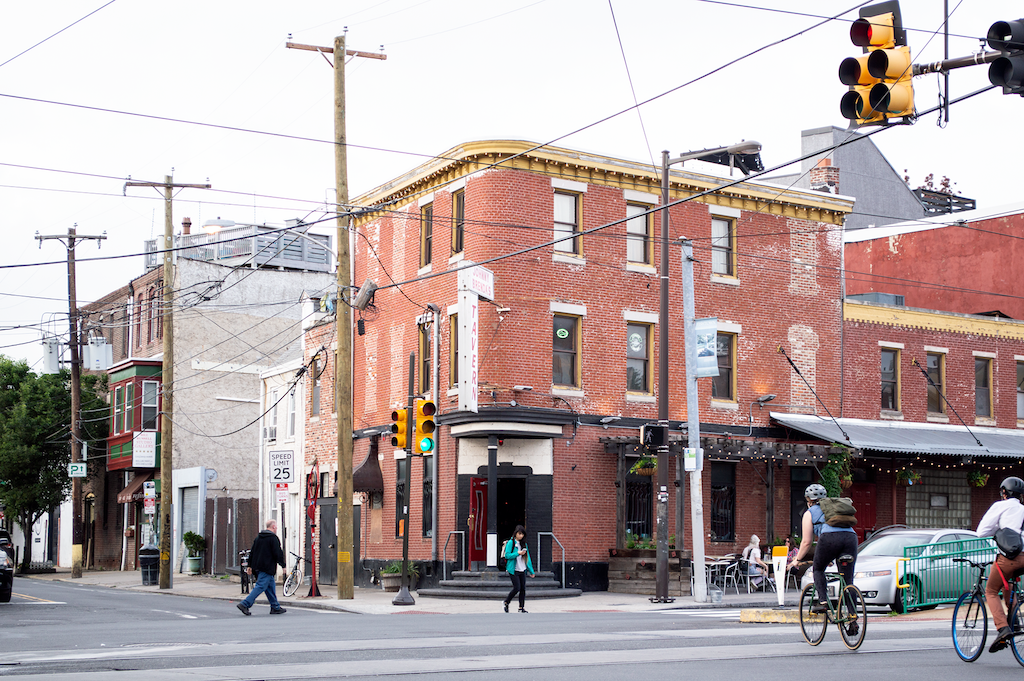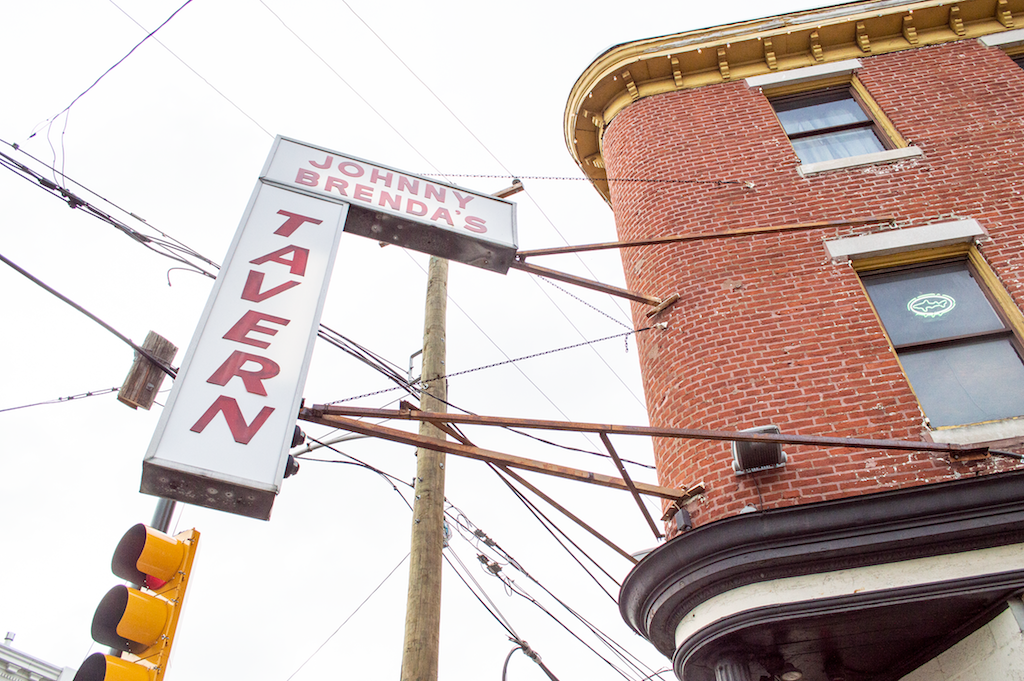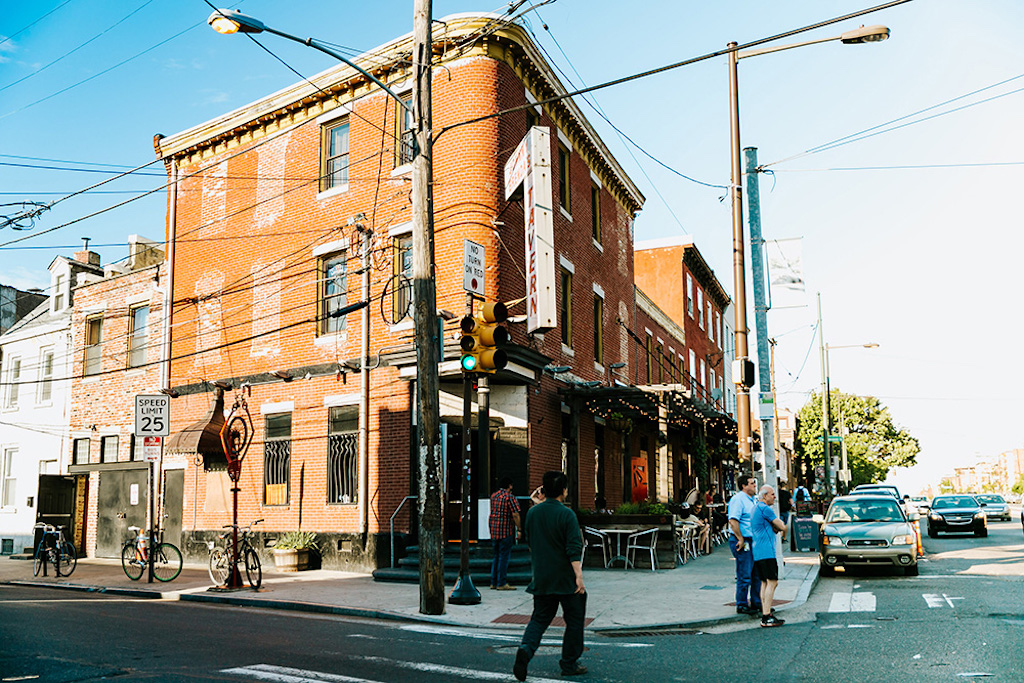In just a handful of years, Fishtown went from typical quiet Philadelphia neighborhood– unknown to outsiders– to a bustling enclave with glowing write-ups in travel guides, and most recently in Forbes Magazine. Considered one of the primary catalysts to the neighborhood’s re-birth, Johnny Brenda’s has become with synonymous with Fishtown– a hip and quirky place with great food and booze. However, this notable curved corner building at the nexus of Frankford and Girard Avenues has worn many hats over the years.

In 1856, at sheriff’s sale, Thomas Wood purchased an empty lot bounded by Frankford Road, Shackamaxon Street, and Franklin Avenue, now known as Girard. Wood, a maker of textile-making machinery, was probably eyeing up the lot for a new factory. He must have changed his plans though, because in 1861, Wood sold the property to blacksmith Valentine Eckert. The new owner, a namesake of his Revolutionary War Colonel ancestor, built a carriage and wagon factory on the site and lived in a home immediately next door. He stayed there until his death in 1891. By the mid 1890s, the building held a liquor store and warehouse owned by a Robert Brotz. By the start of the 20th Century, however, the first floor began operating as William Weisser’s saloon.
William Weisser was a well-known character around the city and was called “Philadelphia’s Biggest Man” by newspapers, not because he was tall– but because he was obese. In 1912, the 480-pound Weisser insisted on establishing his death bed in the back room of his saloon because he knew that no door in his house would be wide enough to move him through after he died. Once he passed, he was placed in his casket in the saloon and had to be moved by truck to the cemetery due to being too large for a conventional hearse.
While Weisser’s saloon operated on the first floor, the second floor was in use by the United States Employment Service. This was an organization created by the Federal Government to find jobs for immigrants and the poor. It was criticized in its day for being geared more toward collecting data about its users than finding them work. Once the Great War came, however, it worked toward filling jobs for the war effort. The future Johnny Brenda’s building was one of the “Female Help” centers for the organization, and continued as such until around 1920.
Prohibition seemingly had little impact in many sections of Philadelphia– there were, in fact, more saloons after 1920 than before, and many of the local breweries continued brewing beer unabated. 1201 Frankford Ave. was no exception. The first floor continued to operate as a saloon and was sold to a saloon operator, Edward Gegnas, in 1923. It took until 1927 for Gegnas’ establishment to get shut down in a mass raid of 100 bars. By the time Prohibition ended in 1933, Edward Gegnas had died and his wife re-married to a Lithuanian immigrant named Anicat “Andy” Karvell. Andy’s Cafe was open on the first floor by 1935, and it operated into the 1950s.
A common misconception published in numerous publications and travel guides is that the property became Johnny Brenda’s in 1967. However, evidence shows that one George Hess ran a “George Hess Bar” at the location in the mid 1970s. George J. Hess sold the property to “John Brenda, Inc” on January 16, 1980. A permit application for the legalization of a sign labeled “Johnny Brenda’s Tavern” was approved in June of the same year.

Johnny Brenda was the ring name for John Imbrenda, the boxer who took over the bar. He was born in the neighborhood but lived much of his life in the Hunting Park section and in Chester, PA. A 5’5” welterweight, Imbrenda fought in eleven (sanctioned) bouts from 1941-47 with a record of 3 wins, 7 losses, and one no contest– though old newspaper ads show that he fought in numerous exhibition bouts.
Johnny Brenda’s continued on into the turn of the 21st Century, known as a rough, dark bar for locals to get a beer and a shot. In 2003, Paul Kimport and William Reed approached Imbrenda about buying the establishment and opening a new bar/restaurant/venue under the same name. Four years earlier, the pair opened Standard Tap in Northern Liberties to great success. The focus on locally-sourced wholesome foods and independent local beers was a relatively new concept for the Philadelphia restaurant scene of the period and proved highly desirable to the public.

A couple of years after Johnny Brenda’s 2.0 opened in 2003 and endured through some initial growing pains, Kimport and Reed took possession of 109 East Girard Ave. and Valentine Eckert’s old house at 1205 Frankford Ave., and incorporated them into the property to add the dining room and concert venue portions of the establishment. Johnny Brenda’s influence at the Frankford & Girard corner certainly played a role in the transformation of the neighborhood over the following 15 years into an almost completely different place.
You can learn more about the past, present, and future of Fishtown at our Fishtown Corridors Tour on June 14th! This is a free tour that will fill up quickly– sign up here!
— Dennis Carlisle
